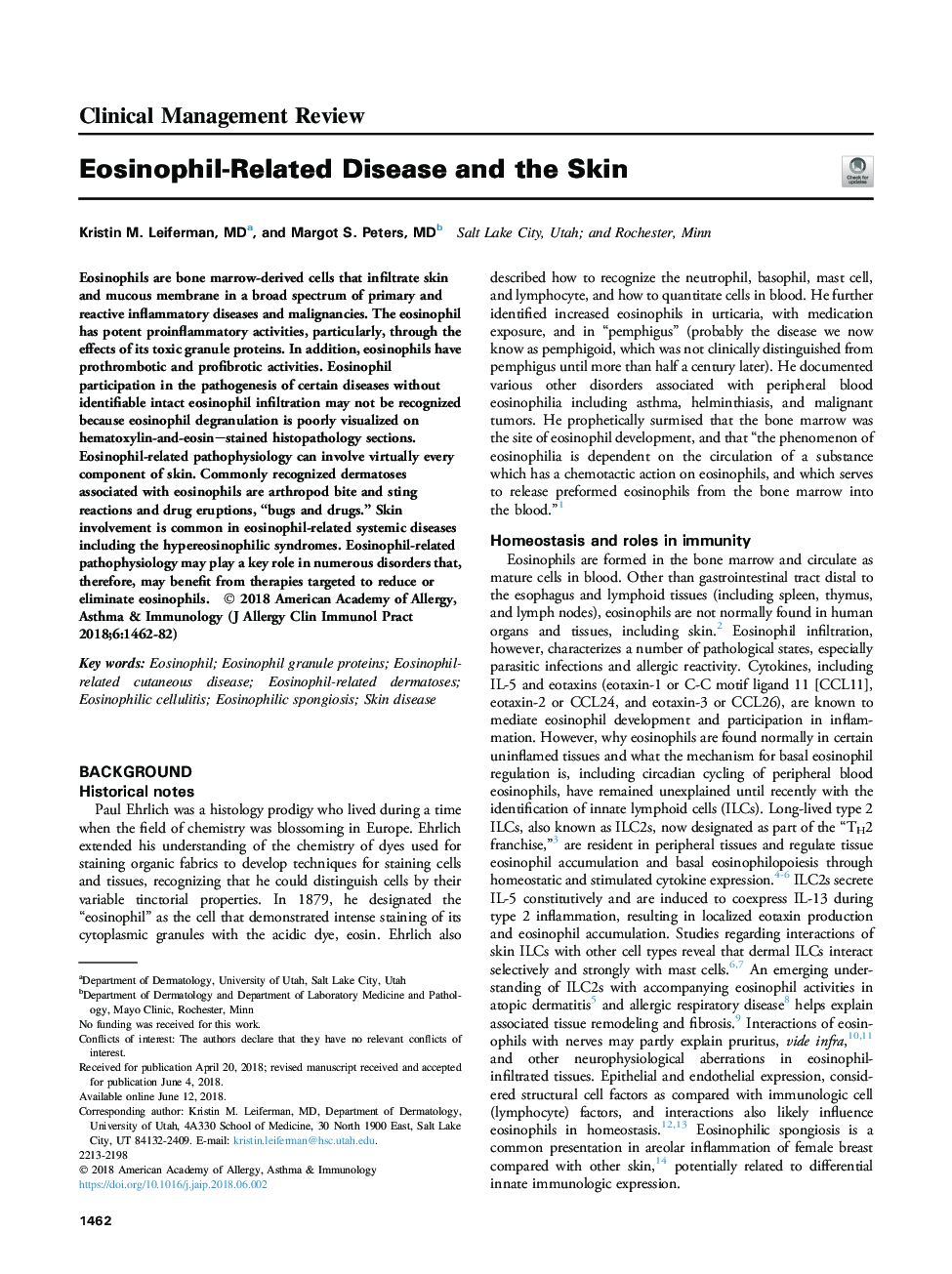| Article ID | Journal | Published Year | Pages | File Type |
|---|---|---|---|---|
| 8963738 | The Journal of Allergy and Clinical Immunology: In Practice | 2018 | 27 Pages |
Abstract
Eosinophils are bone marrow-derived cells that infiltrate skin and mucous membrane in a broad spectrum of primary and reactive inflammatory diseases and malignancies. The eosinophil has potent proinflammatory activities, particularly, through the effects of its toxic granule proteins. In addition, eosinophils have prothrombotic and profibrotic activities. Eosinophil participation in the pathogenesis of certain diseases without identifiable intact eosinophil infiltration may not be recognized because eosinophil degranulation is poorly visualized on hematoxylin-and-eosin-stained histopathology sections. Eosinophil-related pathophysiology can involve virtually every component of skin. Commonly recognized dermatoses associated with eosinophils are arthropod bite and sting reactions and drug eruptions, “bugs and drugs.” Skin involvement is common in eosinophil-related systemic diseases including the hypereosinophilic syndromes. Eosinophil-related pathophysiology may play a key role in numerous disorders that, therefore, may benefit from therapies targeted to reduce or eliminate eosinophils.
Keywords
ILCeosinophilia myalgia syndromeECPeosinophilic spongiosisEGPAALHEILC2CCLGM-CSFIgG4-RDTLRTOSEMSMMP-9EDNEPOCCR3C-C motif ligandH&EEosinophileosinophil peroxidaseHESIgG4-related diseaseskin diseaseregulated on activation, normal T cell expressed and secretedToll-like receptorinnate lymphoid cellHypereosinophilic syndromesToxic oil syndromePlatelet activating factorgranulocyte-macrophage colony-stimulating factorDRESSMatrix metalloproteinase-9RANTESEosinophil-derived neurotoxinPAFHematoxylin and EosinAngiolymphoid hyperplasia with eosinophiliadrug reaction with eosinophilia and systemic symptomsEosinophil cationic protein
Related Topics
Life Sciences
Immunology and Microbiology
Immunology
Authors
Kristin M. MD, Margot S. MD,
